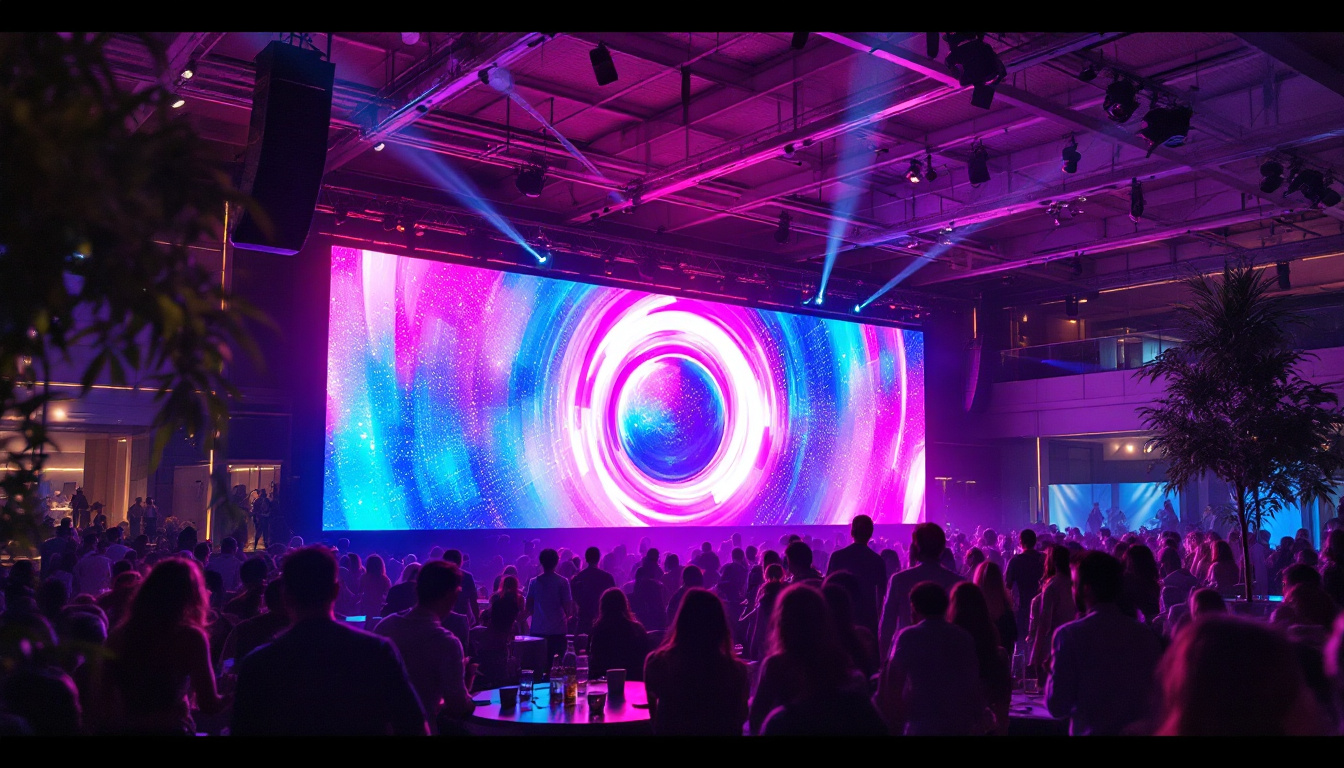In the modern age, churches are increasingly adopting technology to enhance their worship experience. One of the most impactful advancements is the use of LED displays. These vibrant screens have transformed how congregations engage with services, events, and community announcements. This article delves into the intricacies of LED displays, their benefits, and how they are revolutionizing church environments.
Understanding LED Technology
LED, or Light Emitting Diode, technology has made significant strides since its inception. Unlike traditional lighting, LEDs are energy-efficient, long-lasting, and versatile, making them an ideal choice for various applications, including church displays.
How LED Displays Work
At the core of LED displays is a matrix of tiny light-emitting diodes that create images and text. Each diode can emit different colors, and when combined, they produce a full spectrum of colors. This technology allows for high-resolution displays that can convey messages clearly, even in bright environments.
LED displays can be categorized into two main types: direct-view and rear-projection. Direct-view LED displays are composed of individual LED modules that form a large screen, while rear-projection displays use projectors to cast images onto a screen. Each type has its unique advantages, but direct-view LED displays are typically preferred for their brightness and clarity.
Types of LED Displays
Churches can choose from various types of LED displays based on their specific needs and budget. Indoor LED displays are designed for use within church buildings, providing high resolution and vibrant colors suitable for worship services and events. Outdoor LED displays, on the other hand, are built to withstand weather conditions and are often used for announcements or community outreach.
Additionally, there are modular LED displays that can be customized in size and shape, allowing churches to create unique configurations that fit their architectural designs. This flexibility makes LED displays a popular choice for various church settings.
The Benefits of LED Displays in Churches
Implementing LED displays in a church setting comes with a multitude of benefits. From enhancing the worship experience to improving communication, these displays can significantly impact how congregations interact with their environment.
Enhanced Visibility and Engagement
One of the most significant advantages of LED displays is their visibility. The bright and vibrant colors of LED technology ensure that messages are easily seen from a distance, making it easier for congregants to engage with the content being presented. Whether it’s song lyrics, sermon notes, or announcements, LED displays capture attention and foster participation.
Moreover, the dynamic nature of LED displays allows for the integration of multimedia elements such as videos, animations, and live feeds. This capability can enhance the worship experience by creating a more immersive atmosphere that resonates with the congregation.
Cost-Effectiveness and Longevity
While the initial investment in LED displays may seem substantial, the long-term savings can make them a cost-effective choice. LEDs consume significantly less energy than traditional lighting, leading to lower electricity bills. Additionally, their lifespan can exceed 100,000 hours, reducing the need for frequent replacements and maintenance.
Many churches find that the return on investment from enhanced engagement and improved communication far outweighs the initial costs. This financial efficiency makes LED displays an attractive option for congregations of all sizes.
Improved Communication and Outreach
effective communication is vital for any church, and LED displays play a crucial role in this aspect. They provide a platform for real-time announcements, event promotions, and important messages, ensuring that congregants are always informed.
Furthermore, outdoor LED displays can extend a church’s outreach efforts by attracting the attention of passersby. Whether it’s advertising community events, services, or special programs, these displays can help draw in new members and foster a sense of community.
Choosing the Right LED Display for Your Church
When considering an LED display for a church, several factors must be taken into account to ensure the right choice is made. From size to resolution, each element plays a significant role in the overall effectiveness of the display.
Determining the Size and Placement
The size of the LED display is crucial, as it needs to be large enough to be seen by the entire congregation. Factors such as the size of the worship space, seating arrangement, and viewing distance should be considered. A display that is too small may not be effective, while one that is too large may overwhelm the space.
Placement is equally important. Displays should be positioned where they can be easily viewed without obstructing sightlines or creating distractions. Common placements include behind the pulpit, on stage, or in the foyer for announcements.
Resolution and Quality
Resolution is another critical factor to consider when selecting an LED display. Higher resolution displays provide clearer images and text, making it easier for congregants to read and engage with the content. For indoor displays, a pixel pitch of 2.5mm to 4mm is often ideal, while outdoor displays may require a larger pixel pitch due to viewing distances.
Investing in a high-quality display ensures that the church can deliver a professional and polished appearance, enhancing the overall worship experience.
Budget Considerations
Budget is a significant consideration for many churches. While LED displays can be a considerable investment, it’s essential to weigh the costs against the potential benefits. Many manufacturers offer financing options, making it easier for churches to acquire the technology they need without straining their budgets.
Additionally, churches should consider ongoing costs such as maintenance, electricity, and content management. Choosing an energy-efficient model can help reduce long-term expenses, making the investment more manageable.
Installation and Maintenance of LED Displays
Once a church has decided on the right LED display, the next step is installation. Proper installation is crucial to ensure the display functions correctly and safely. Engaging professionals with experience in LED installations can help avoid common pitfalls and ensure a seamless setup.
Professional Installation Services
Hiring a professional installation service is often the best route for churches. These experts can assess the space, recommend optimal placement, and ensure that all electrical and structural requirements are met. A professional installation not only guarantees safety but also maximizes the display’s effectiveness.
Additionally, many installation services offer training for church staff, ensuring they are equipped to operate and manage the display effectively. This training can be invaluable in maximizing the display’s potential.
Regular Maintenance and Upkeep
Maintaining an LED display is essential for longevity and performance. Regular cleaning and inspections can prevent issues such as dust accumulation and pixel failure. Many manufacturers provide guidelines for maintenance, and churches should establish a routine to ensure their display remains in optimal condition.
In addition to physical upkeep, software updates and content management are also crucial. Keeping the display’s software up to date ensures it operates efficiently and securely, while regularly refreshing content keeps the congregation engaged.
Case Studies: Successful Implementations of LED Displays
Numerous churches have successfully integrated LED displays into their environments, showcasing the technology’s potential. These case studies provide valuable insights into how LED displays can enhance worship experiences and community engagement.
Community Engagement at St. Andrew’s Church
St. Andrew’s Church implemented an outdoor LED display to promote community events and services. The display has become a focal point for the church, attracting attention from passersby and increasing participation in local events. The vibrant colors and dynamic content have helped foster a sense of community and inclusivity.
Feedback from congregants has been overwhelmingly positive, with many expressing appreciation for the clear communication of events and announcements. This success has encouraged St. Andrew’s to explore further technological enhancements to their worship experience.
Enhancing Worship at Grace Fellowship
Grace Fellowship invested in an indoor LED display to enhance their worship services. The display is used for song lyrics, sermon notes, and multimedia presentations. The impact has been profound, with congregants reporting a deeper engagement during services.
The church has also utilized the display for special events, creating an immersive experience that resonates with attendees. Grace Fellowship’s leadership has noted a marked increase in attendance and participation since the installation, demonstrating the effectiveness of LED technology in a worship setting.
The Future of LED Displays in Churches
As technology continues to evolve, the future of LED displays in churches looks promising. Innovations in display technology, such as higher resolutions, improved energy efficiency, and enhanced interactivity, will likely shape how churches utilize these tools.
Emerging Trends in Display Technology
Trends such as interactive displays are gaining traction, allowing congregants to engage with content more dynamically. Touchscreen capabilities can enable participation in polls, prayer requests, and even interactive Bible studies, fostering a more engaging worship experience.
Furthermore, advancements in augmented reality (AR) and virtual reality (VR) may soon find their way into church settings, providing immersive experiences that enhance storytelling and teaching. These technologies can create captivating environments that draw congregants into the message being presented.
Continued Integration of Technology in Worship
The integration of technology in worship is not merely a trend but a necessity for many churches. As congregations become more accustomed to digital experiences, churches must adapt to meet their expectations. LED displays will play a crucial role in this evolution, serving as a bridge between tradition and modernity.
Ultimately, the goal of incorporating LED displays is to enhance the worship experience, foster community engagement, and communicate effectively. As churches continue to explore new technologies, LED displays will remain a vital component of their outreach and worship strategies.
Conclusion
LED displays have revolutionized the way churches communicate and engage with their congregations. From enhancing visibility and engagement to providing cost-effective solutions, the benefits of LED technology are undeniable. As churches consider the implementation of LED displays, careful planning and consideration will ensure that they choose the right solution for their unique needs.
Looking ahead, the future of LED displays in churches is bright, with emerging technologies poised to further enhance worship experiences. By embracing these advancements, churches can continue to foster vibrant communities and create meaningful connections with their congregants.
Illuminate Your Worship Space with LumenMatrix
Ready to elevate your church’s worship experience with vibrant, energy-efficient LED displays? Discover the innovative solutions from LumenMatrix, where we specialize in a wide array of LED display modules tailored to your needs. From Indoor and Outdoor LED Walls to Custom and All-in-One LED Displays, LumenMatrix is committed to transforming your visual communication. Check out LumenMatrix LED Display Solutions today and bring a new light to your congregation’s engagement and connection.































